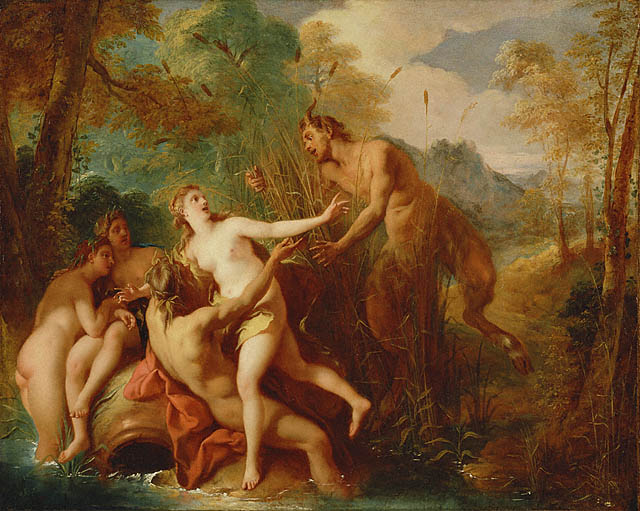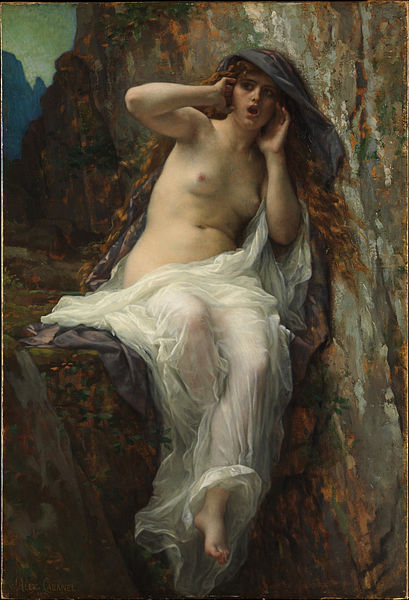

Pan's goatish image recalls conventional faun-like depictions of Satan. Although Christian use of Plutarch's story is of long standing, Ronald Hutton [39] has argued that this specific association is modern and derives from Pan's popularity in Victorian and Edwardian neopaganism. Medieval and early modern images of Satan tend, by contrast, to show generic semi-human monsters with horns, wings and clawed feet
Pan once had the audacity to compare his music with that of Apollo, and to challenge Apollo, the god of the lyre, to a trial of skill. Tmolus, the mountain-god, was chosen to umpire. Pan blew on his pipes and gave great satisfaction with his rustic melody to himself and to his faithful follower, Midas, who happened to be present. Then Apollo struck the strings of his lyre. Tmolus at once awarded the victory to Apollo, and all but Midas agreed with the judgment. Midas dissented and questioned the justice of the award. Apollo would not suffer such a depraved pair of ears any longer and turned Midas' ears into those of a donkey
Diogenes of Sinope, speaking in jest, related a myth of Pan learning masturbation from his father, Hermes, and teaching the habit to shepherds
He has the hindquarters, legs, and horns of a goat, in the same manner as a faun or satyr. With his homeland in rustic Arcadia, he is recognized as the god of fields, groves, and wooded glens




No comments:
Post a Comment
Note: only a member of this blog may post a comment.